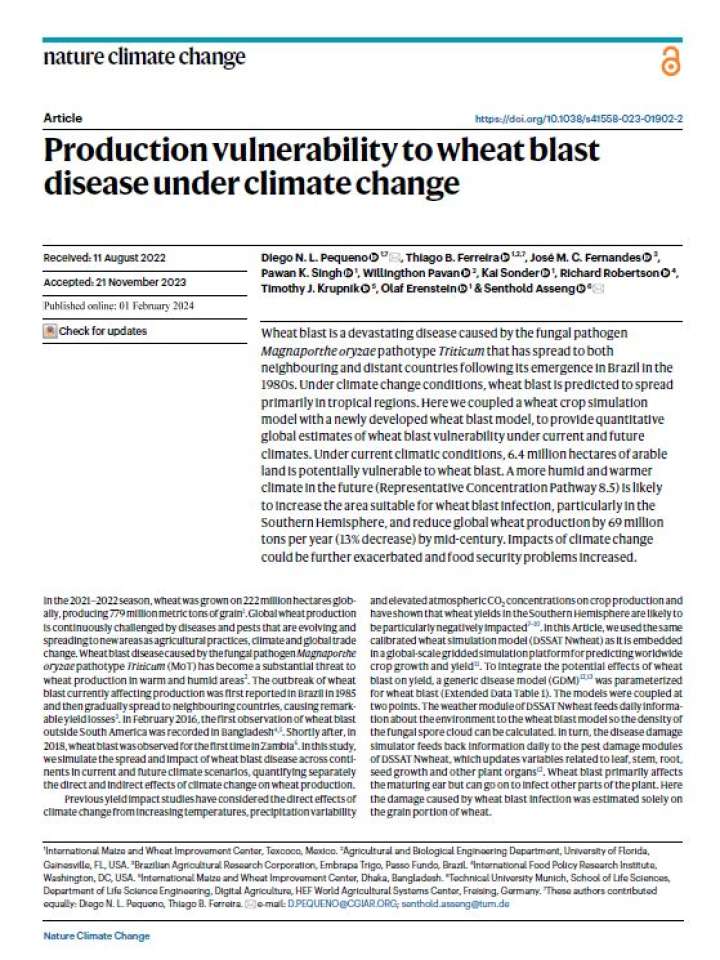Production vulnerability to wheat blast disease under climate change
In this study, researchers coupled a wheat crop simulation model with a newly developed wheat blast model, to provide quantitative global estimates of wheat blast vulnerability under current and future climates. Wheat blast is a devastating disease caused by the fungal pathogen Magnaporthe oryzae pathotype Triticum that has spread to both neighbouring and distant countries following its emergence in Brazil in the 1980s. Under climate change conditions, wheat blast is predicted to spread primarily in tropical regions.
Under current climatic conditions, 6.4 million hectares of arable land is potentially vulnerable to wheat blast. A more humid and warmer climate in the future (Representative Concentration Pathway 8.5) is likely to increase the area suitable for wheat blast infection, particularly in the Southern Hemisphere, and reduce global wheat production by 69 million tons per year (13% decrease) by mid-century. Impacts of climate change could be further exacerbated and food security problems increased.
Explore further
